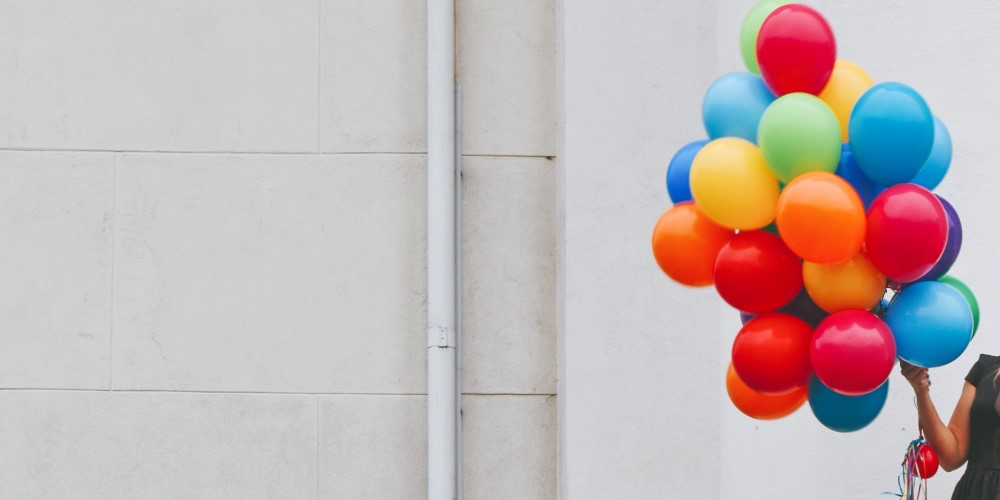The Art of Letting Go
Attachment is an innate human reaction. We cling to love, objects, ideas. The art of letting go can be approached from many angles, depending on what we are attached to, be it a situation, a problem, an idea, a toxic relationship, or on a physical level, old furniture, unused tools or worn clothes. Why do we insist on keeping what no longer serves us, doesn’t build, doesn’t advance or make our lives easier, more relaxed, more spacious?
Attachment in Buddhism
In the basic teachings of the Buddha, attachment is marked by the desire for possession as the main cause of our suffering. We cling to a person, an object, a memory, a feeling, even though they are all transient (aniccsa) and temporary.
Therefore, in attachment, we can only have momentary joy, but there is always suffering in attachment. Release and lightness, on the other hand, can be linked to a relaxed, peaceful state.
True love, for example, is not based on attachment of possession either. True love is when we want to see the loved one happy, not achieve happiness ourselves through the presence of this person in our lives.
This is a huge difference, but the terms attachment and compassion as well as the feelings associated with them are also very diverse and cannot be applied to every situation, not every relationship in the same way..
Here, too, self-examination, the practice of meditation, can be the key to discovering what motivates us, what drives us in certain situations.

Perception of Buddhist Detachment in the Western World
We often find attachment in love as a main component of a relationship – be it one driven by passion or possession or by the compassionate desire to make each other happy.
In this light Buddha’s rejection of attachment often is received negatively in the Western perception. In Western culture relationships are always based on one of the nuances of attachment. For this reason, Buddhism interpreted in the West has acquired a kind of gloomy, anti-world, ascetic character.
This was not helped by the fact that, quite early on, a good few representatives of Asian Buddhist lines considered all the different emotions of attachment to be of the same origin. Yet – and this is where psychology comes into play – it’s not that simple. Psychologically, a person’s emotional functioning is not a black-and-white line of yes-no variables.
They often referred to a sentence of the Buddha, which according to the scriptures he said as a consolation to one of the great supporters of the Sangha. The lady in question was completely shattered by the despair she felt over the death of her beloved granddaughter, when Buddha said: “She who does not love, does not suffer”.
This saying, taken out of context (as it was intended to help a person who in a given situation could not let go of something or someone inevitably lost), repeatedly inspired ideologues, critics, and opponents of Buddhism to portray Buddhism as a cold, disctanced and insensitive.
The Correct Interpretation of Detachment in Buddhism
Yet, if we delve into it a little bit, it soon becomes clear that non-attachment is not about coldness and insensitivity at all. Especially if we knowl the definition of love (Pali: metta, Sanskrit: maitre) given by Buddha himself in the central verses of the Karaniya metta sutta:
“Even as a mother protects with her life her child, her only child, so with a boundless heart should one cherish all living beings; radiating kindness over the entire world: spreading upwards to the skies, and downwards to the depths; outwards and unbounded, freed from hatred and ill-will. ”
The Nature of Personal and Material Attraction
There is hardly a word, let’s take any language, that has only one meaning. If we want to get a clear picture of an attraction – be it to a person or certain material things – we must first ask ourselves what kind of attraction we feel in a given situation. What is the nature and the characteristics of our attraction? Only in this way will it be recognizable whether or not it is salvation.
If a person is dependent on certain things or beings with a passionate, possessive attachment, they will experience the non-salutary nature of their actions as suffering. However, if a person nurtures just loving feelings in the direction of certain things and beings, while being internally free, it is a salutary behavior.
The Art of Letting Go
The dissolution of attachment offers release. And the art of letting go is contemplation when we let things flow the way they are. This is a nihilistic, indifferent approach for many, although it is worth being interpreted in a more positive way.
Adherence to an idea, an object, or a person inadvertently implies that things are not going to work according to our idea, our will. If we bring release into the possibilities, we can create a more relaxed state of mind. The salutary, loving aspect of letting go, if understood and cultivated, will be greeted by more spacious, relaxed, peaceful states.
Let Go, but How?
Everyone has an idea associated with this phrase, but how do we really let go? Letting go can start on the level of the mind (meditation) or on the physical level (movement, yoga).If you find yourself in a mental or emotional state which is full of attachment and suffering, then try to practice any of those two, no matter how hard it is, and observe what happens.
Meditation – Look within You
To move, look at, accept and cleanse. In meditation, we can contemplate and look within us. We close our eyes and imagine how things, thoughts come into place, and we gain a clearer vision. And with time we can learn how to let go.
Yoga – Harmonize your body and your mind
Practicing yoga can help to create harmony between movement and emotions. Emotions and thoughts also move, and if we are “stuck” in an emotional state, the movement can help us to move forward mentall as well.
Learn to Let Go
The ability to forgive can ben practiced and developed. Let go of everything that no longer serves your development, your well-being. We can take on this process step by step. The first one is always realization, to notice our state, to become aware of a specific process. Spend time with it, examine it, and then, if you feel able to do it, then the art of letting go can come in some way.
On a practical level, we can even connect cleaning and sorting to the art of letting go. When we beautify our own physical space, it has the same positive effect on our mind and our ability to see clearly..
We can collect our clothes and items that are no longer worn and donate them to people in need. These cleansing, sorting exercises have a very positive effect on dissolving attachment.

The Analogy of Disease and Attachment
According to many eastern philosophical and medical systems excessive attachment and the associated tense conditions over time also manifest itself at the physical level. They may manifest themselves in the form of pain, nodules, diseases. For example, if we are attached to the sense of security that our house, our family, our work means, then we are completely shattered when they disappear.
Yet the feeling of security is also a kind of illusion. This is also very well illustrated by the pandemic of the last year. We can find security in our own consciousness, in our way of thinking, learning to see more clearly and developing a deeper wisdom. Our thought patterns are also responsible for what we experience on a physical level. This is also reflected in the basic idea of Tibetan medicine, which states that diseases begin on the psychological level..
A relaxed, healthy body is associated with a relaxed mind. The art of letting go can be practiced on a conscious or physical level, through movement. Cultivating a healthy lifestyle means that we are able to relax in any situation. If this seems difficult at first, we can always start small, but it’s worth addressing the issue of attachment release.
 English
English magyar
magyar